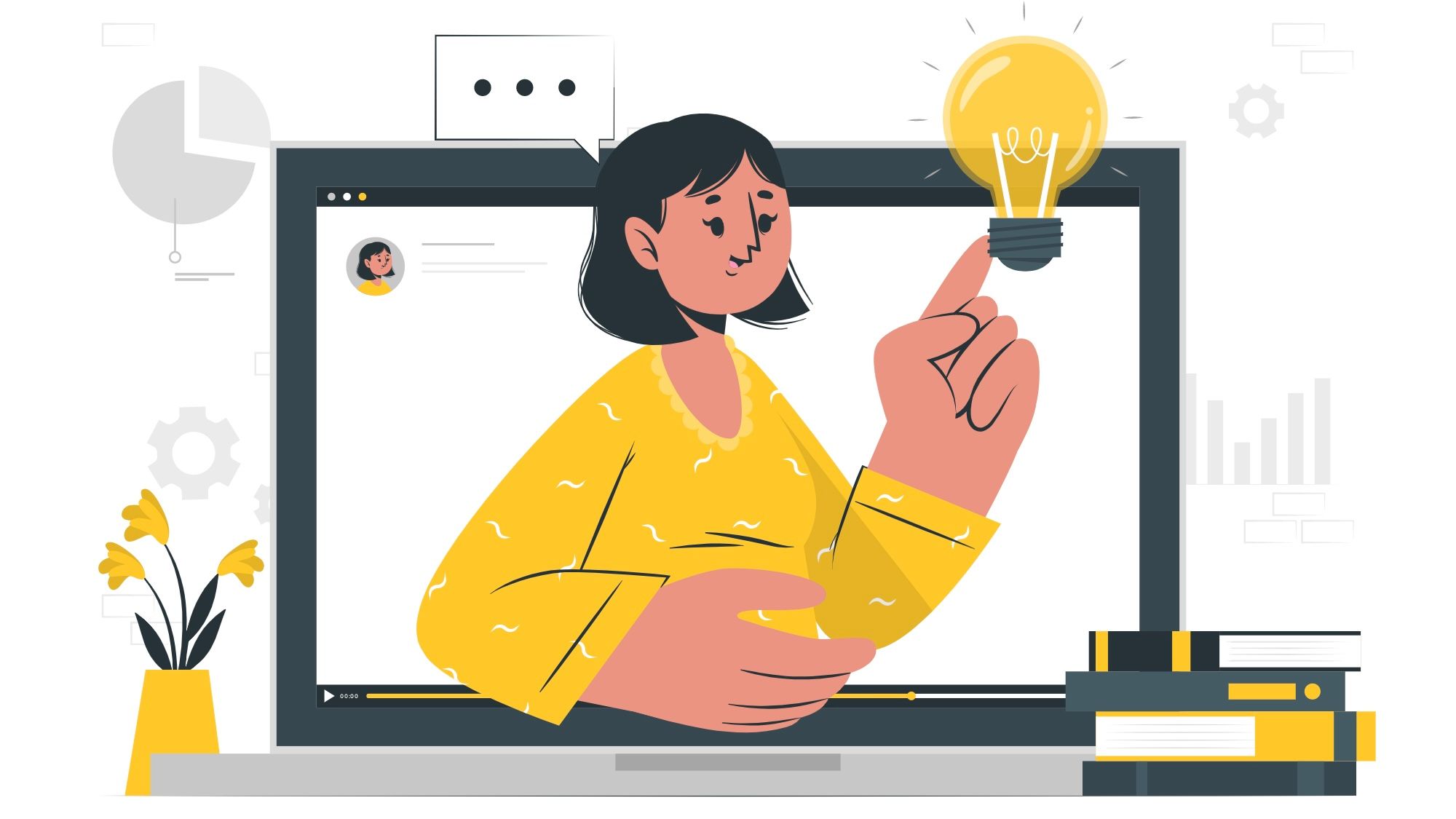The Trap of Being Unrealistic

Vector image is from storyset.com by @storyset.
Many of us have fallen into the trap of being unrealistic—of being overly optimistic and downplaying the difficulties we’re likely to encounter.
This is not a new problem. In fact, it’s been documented across the ages. In the 5th century B.C., Thucydides, a Greek historian and Athenian general, wrote, “it is a habit of mankind to entrust to careless hope what they long for.” Julius Caesar, a Roman general and emperor in the 1st century B.C., added, “Men willingly believe what they wish to be true.”
The idea of unrealistic optimism also famously goes back to German philosopher Gottfried Wilhelm Leibniz. He wrote that we live in “the best of all possible worlds.” Voltaire famously mocked Leibniz’s theory in his satirical novella, Candide. In that story, Professor Pangloss is teaching a young man named Candide that “all that is is for the best” in this, the “best of all possible worlds,” and “everything is right.” After witnessing and experiencing much suffering and misfortune, though, Candide eventually comes to his own conclusion that “we must cultivate our garden” and not rely on idealistic thinking.
Examples of Being Unrealistic
Examples of being unrealistic abound in our lives:
We may expect to be able to stick to a diet or exercise plan without having any setbacks.
In school, perhaps we expect to get good grades in all subjects—or to have everyone like us.
When it comes to relationships, we may think they should be easy or effortless, just like in the movies. Our partner should be willing to change to suit our needs.
At work, perhaps we presume we’ll have a great job with an excellent, caring boss and fun, supportive colleagues. Opportunities will appear, and we’ll get that raise or promotion.
When we start a new venture, we assume it will succeed despite the obstacles and long odds.
And when we retire, everything will be easy.
Of course, it’s possible to be realistic in one setting and unrealistic in another.
The Problem with Being Unrealistic
When we’re being unrealistic, we get in our own way and set ourselves up for failure, frustration, and self-criticism. We diminish our happiness and strain our relationships, building resentment.
With unrealistic notions, we make poor decisions and cause ourselves more stress. We feel stupid or incompetent if we don’t achieve our goals.
Sometimes, the stakes are even higher. Indulging in unrealistic hopes can sometimes crush our spirit.
The Stockdale Paradox
In his book, Good to Great, Jim Collins told the harrowing story of James Stockdale, a U.S. Navy vice admiral and aviator officer held captive for more than seven years during the Vietnam War.
Admiral Stockdale was the highest-ranking U.S. military officer in the “Hanoi Hilton” prisoner-of-war camp in Vietnam. He was tortured more than twenty times and had no rights, no release date, and no reason to believe he would survive or see his family again.
When Collins asked him how he survived such horrendous conditions, Admiral Stockdale replied, “I never lost faith in the end of the story. I never doubted not only that I would get out, but also that I would prevail in the end and turn the experience into the defining event of my life, which, in retrospect, I would not trade.”
Collins then asked Stockdale which of his fellow prisoners didn’t make it out.
“The optimists,” Stockdale replied, “…they were the ones who said, ‘We’re going to be out by Christmas.’ And Christmas would come, and Christmas would go. Then they’d say, ‘We’re going to be out by Easter.’ And Easter would come, and Easter would go. And then Thanksgiving, and then it would be Christmas again. And they died of a broken heart.”
“This is a very important lesson,” Stockdale continued after pausing. “You must never confuse faith that you will prevail in the end—which you can never afford to lose—with the discipline to confront the most brutal facts of your current reality, whatever they might be.” Collins famously called this the “Stockdale paradox.”
The key, it appears, is not blind faith and optimism or dreary resignation, but rather disciplined acknowledgement of reality accompanied by ultimate conviction and faith over the long haul with a commitment to overcome and endure. Without disciplined realism about the current state of affairs, we’re lost to false hope.
Cognitive Biases that Impede Our Thinking
Unfortunately, striking this tricky balance is complicated by the way our brains are wired. Research from eminent psychologists Daniel Kahneman and Amos Tversky, among many others, has shown that we humans have many cognitive biases—systematic errors in thinking that influence how we make decisions—which lead to distorted perceptions and faulty judgments. They occur automatically and unconsciously over a wide range of our thinking. Researchers have identified at least 58 cognitive biases and heuristics (mental shortcuts we use to make decisions).
Examples of cognitive biases related to being unrealistic include:
- Optimism bias: our tendency to overestimate the likelihood of experiencing favourable events and to underestimate the likelihood of unfavourable ones.
- Overconfidence bias: our tendency to overestimate our abilities.
- Illusion of control: overestimating our ability to control events.
- Planning fallacy: our tendency to underestimate the time, costs, and risks of future actions and to overestimate their benefits.
- Positive illusion: our unrealistically favourable attitudes towards ourselves or those close to us.
- Competition neglect: ignoring the likelihood of competitors undertaking the same venture we’re planning.
- Confirmation bias: our tendency to favour information that confirms our beliefs or hypotheses.
- “Dunning–Kruger effect”: when people with low ability at a certain task overestimate their ability at it.
“What we like to think of ourselves and what we really are rarely have much in common….” -Stephen King, The Drawing of the Three
According to cognitive neuroscientist Tali Sharot, a whopping 80% of us have an optimism bias. Importantly, we’re oblivious to it. This can lead to problems in many areas, from planning, budgeting, saving, and insurance to our propensity to get medical checkups.
According to researchers, we tend to overestimate our positive attributes (e.g., competence, intelligence, attractiveness) and underestimate our negative ones (e.g., character flaws, mistakes). Some telling examples*:
- The vast majority of us consider ourselves above average.
- 70% of high school seniors believe their leadership skills are above average.
- 25% of people believe they’re in the top 1% in their ability to get along with others.
- 94% of college professors say they’re doing above-average work.
Researchers have found that there are many benefits of optimism, from better health, longevity, and moods to improved motivation, coping, and perseverance. But researcher and author Shawn Achor notes that “optimism become maladaptive when it causes us to grossly overestimate our current abilities.”
So, optimism is better than pessimism in most situations, but optimistic realism is better than blind optimism. We need to learn to be reasonably optimistic without drifting into the land of fantasy and naiveté—without becoming unrealistic. How?
Listen: Raise Your Game: The Power of Realistic Optimism
How to Escape the Trap of Being Unrealistic
Here are seven things we can do to avoid being unrealistic in our thinking:
- Clarify what our expectations are (best to write them down) and where they came from.
- Evaluate whether our expectations are appropriate.
- Take an inventory of the time, resources, energy, and motivation we have available. Assess our limits, noting that we don’t have unlimited resources.
- Recall that there are always external factors outside our control. Keep the focus on things we can control and bear in mind that things can change.
- Balance our high expectations with acknowledgment of risks and potential setbacks. Outline not just the best-case scenario but also the base-case and worst-case scenarios to ensure we have a fuller picture of the range of possible outcomes.
- Adjust expectations as we go, if needed, based on new information.
- Document how things turn out after the fact and compare them to our initial expectations to see if we’re being unrealistic regularly. This can help us calibrate our expectations going forward.
Discover: Optimism Trumps Positivity in a Crisis
How to Address Lack of Realism in the Workplace
Of course, being unrealistic isn’t just a problem for individuals. It’s also a problem for teams and organisations.
“For every one of our failures, we had spreadsheets that looked awesome.” -Scott Cook, co-founder, Intuit
Here are nine steps we can take to make teams and organisations more realistic:
- Balance the team with diversity and different viewpoints.
- Create a team culture that welcomes and even rewards tough questions, rigorous debate, and conscientious exploration of options, including “psychological safety.”
- Recruit and activate a diverse external network of advisers while noting the limits of the expertise of others and the risks of deferring too much to authority figures.
- Look at problems from many angles.
- Test ideas systematically—and proactively look for their potential weaknesses while remaining curious about information that doesn’t fit current assumptions.
- Beware of simple ideas and overly simplistic solutions.
- Be humble about the extent of our expertise.
- Seek information from other fields.
- Engage with people who disagree and be open and curious about their viewpoints.
Note: For an excellent resource, see Hans Rosling’s book, Factfulness (Flatiron Books, 2018).
“Everyone seems to get the world devastatingly wrong. Not only devastatingly wrong, but systematically wrong.” -Hans Rosling, Swedish physician, academic, and author
Kahneman notes that debiasing ourselves is very difficult: it’s much easier to train people to detect bias in others. So, it’s a big mistake to attempt this on our own. (See the Appendix for three techniques we can use to avoid the trap of being unrealistic.)
Conclusion
For decades, we’ve been hearing about the power of positive thinking. Optimists are lionized in many cultures, while pessimists are dismissed. These notions, it turns out, are only half right.
We do want optimism and positive thinking. They are, in fact, helpful. And setting high standards can be useful, as it can help motivate and inspire us.
But optimism and positive thinking are also dangerous in many cases. They do better when supplemented with a healthy dose of realism that acknowledges the actual facts on the ground and avoids the many tricks our brains play on us when we’re enamoured with hope and possibility.
Reflection Questions
- Are you being unrealistic about some things in your life and work?
- To what extent have you fallen into the trap of being unrealistic?
- What will you do about it, starting today?
This article was also published on Gregg Vanourek's LinkedIn.
Edited by: Kiran Tuljaram
Personal
Tags: Culture, Talent Development, Growth, Growth Mindset, Self-Awareness, Self-Agency
Gregg Vanourek is an executive, changemaker, and award-winning author who trains, teaches, and speaks on leadership, entrepreneurship, and life and work design. He runs Gregg Vanourek LLC, a training venture focused on leading self, leading others, and leading change. Gregg is co-author of three books, including Triple Crown Leadership (a winner of the International Book Awards) and LIFE Entrepreneurs (a manifesto for integrating our life and work with purpose and passion).





